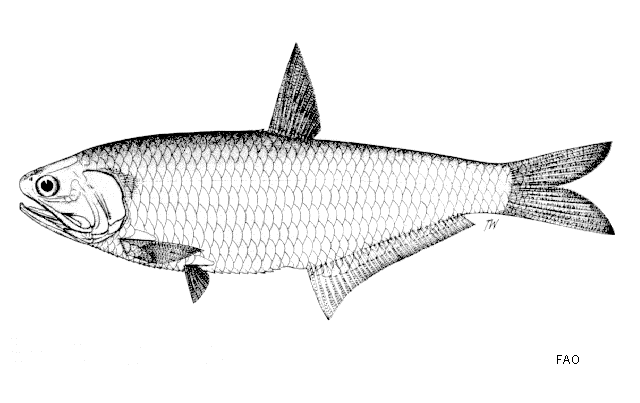| Engraulidae (Anchovies), subfamily: Coiliinae |
| 40 cm SL (male/unsexed) |
|
pelagic-neritic; freshwater; brackish; marine, catadromous |
| Asia and Oceania: Papua New Guinea (Strickland and Fly Rivers), Indonesia (Lorentz River in Irian Jaya) and Australia (rivers entering the Gulf of Carpentaria). |
|
Dorsal spines (total): 0-0; Dorsal soft rays (total): 12-13; Anal spines: 0-0; Anal soft rays: 35-42. Belly with 19 + 12 = 31 keeled scutes from isthmus to anus. Maxilla short, only reaching to front border of pre-operculum; first supra-maxilla about two thirds of second. No dark blotches on nape or behind upper part of gill opening. |
| Inhabits streams and associated lagoons, in clear or turbid water; also in brackish estuaries (Ref. 44894). A riverine species reaching nearly 900 km up the Fly River, but also down to the estuary. Found in main river channels as well as smaller tributaries (Ref. 2847). It forms shoals in deeper water of lagoons. Breeding biology is poorly understood, but it seems likely that spawning takes place in fresh water as juveniles have been collected from the upper reaches of some Queensland rivers. The diet consists of small crustaceans, fishes, insects and some plant material (Ref. 44894). Piscivorous (at least as large adults), recorded as feeding on Clupeoides papuensis and Melanotaenia nigra in the Fly River. The only anchovy that is restricted to mainly freshwater habitats (Ref. 44894). The largest anchovy known so far. |
|
Data deficient (DD); Date assessed: 14 February 2019 Ref. (130435)
|
| harmless |
|
Source and more info: www.fishbase.org. For personal, classroom, and other internal use only. Not for publication.

